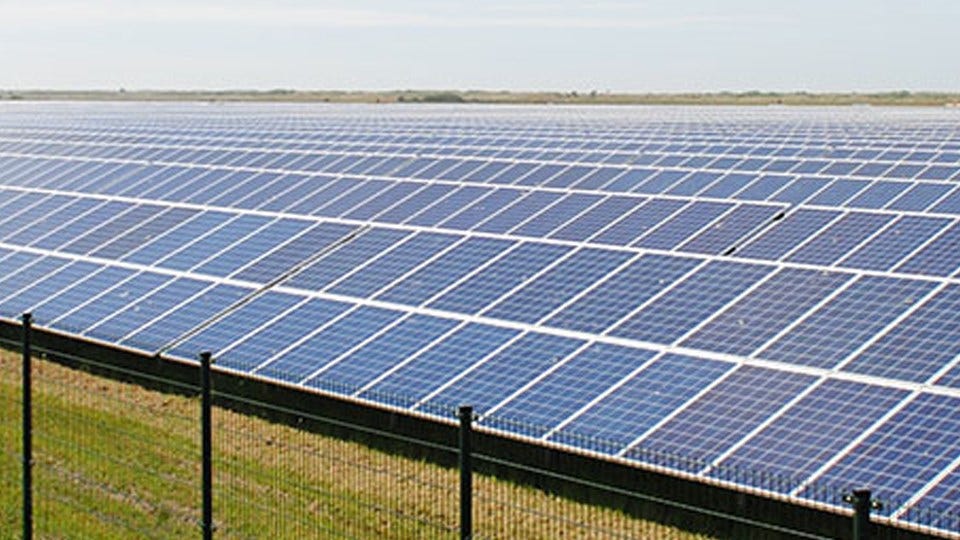Southwest Indiana Set for Big Solar Investments
 (photo courtesy of Elliot Solar)
(photo courtesy of Elliot Solar)
Subscriber Benefit
As a subscriber you can listen to articles at work, in the car, or while you work out. Subscribe NowIn September, three major solar projects totaling nearly $430 million were announced for Knox, Gibson and Pike counties. The projects are being developed by Capital Dynamics in Switzerland in partnership with Nebraska-based Tenaska. Tiago Sabino Dias, president and chief executive officer of Capital Dynamics affiliate Arevon Energy Management, says a combination of demand from utilities and co-ops for renewable energy and the prime locations in southwest Indiana is what attracted the companies to the area.
Dias says the southern part of the state is more suitable for solar farms than other areas.
“The sunshine is brighter there. There is more hours of sunshine throughout the year and so you can generate more solar energy out of it,” said Dias. “So if you want to be really competitive in this state, it’s better for you to be in the south than in the north in terms of solar resources.”
Dias says the locations for the new solar farms are ideal for better interconnection with the electric grid.
Capital Dynamics’ Clean Energy Infrastructure business is leading the development of all three projects with Arevon serving as the “boots on the ground” for the work.
The first project in Pike County is the $128 million Ratts 1 Solar Project, which will feature a 150-megawatt solar field covering 1,200 acres near Petersburg. The developers plan to break ground on the project next summer, creating 350 construction jobs and four full-time maintenance positions when it is complete in 2023.
CEI and Arevon plan to begin work on the $128 million Ratts 2 Solar Project in Vincennes in early 2022. The 150-megawatt project, which will cover about 1,200 acres in the Knox County community, is slated for completion in 2023.
Meanwhile, the developers are also planning a $170 million, 200-megawatt solar farm in Gibson County. Construction on the Elliott Solar Farm is expected to begin in early 2022 and be complete in 2023.
Dias says the projects bring multiple benefits.
“We signed land lease agreements, so we rent these areas for these projects; once they’re built, they will stay there for 35 years and this is a source of revenue that is very safe. They know exactly what they will make every year. So this is a huge injection of capital to the hands of folks who live in these counties,” said Dias. “The second point is property taxes. There are not lot a lot of businesses that you can say that once they’re installed in a place, you’re generating property taxes for 30-35 years…and solar projects is one of them.”
Dias adds the long construction period for such projects creates a large injection of capital in the counties with the hundreds of construction jobs they create. He says once the construction is complete, the major benefit is in the clean energy the solar farms create for local utilities, co-ops, and ultimately, businesses and residents.
Dias says it is important not to overlook the number of major companies looking to have clean energy as part of their portfolios. He says having clean energy resources in a community could be a major economic development driver.
“At some point, the renewable penetration will be an important decision for businesses to go to certain areas and I think a lot of the counties that we’re talking to, they understand that very well and they see that benefit down the line of starting to be more green, starting to be more renewable and then having a competitive advantage to bringing businesses to the region.”
CEI and Arevon have more projects in the works for Indiana in years to come. Dias says the developers will be in Indiana “for the long haul,” citing the warm welcome from state and local communities.
“We don’t see a reason to back off now. We will go and try to expand as much as we can, as much as the communities allow us to expand and as much as demand allows us.”
Dias says the southern part of the state is more suitable for solar farms than other areas.
Dias says the projects bring multiple benefits.
